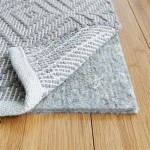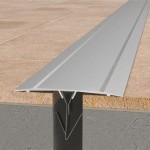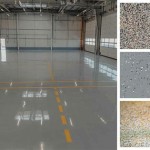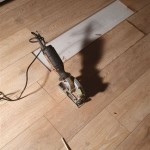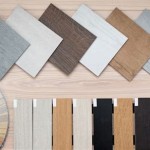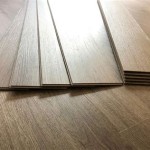How To Repair Damaged Floor Joists
Floor joists are structural members that support the flooring of a building. These horizontal beams are typically made of wood and are essential for maintaining the stability and integrity of a structure. Over time, floor joists can become damaged due to various factors such as moisture, insect infestation, or excessive load. Addressing damaged floor joists promptly is crucial to prevent further deterioration and potential safety hazards. Understanding the causes of damage and the appropriate repair methods is paramount for ensuring the long-term structural integrity of a building.
The presence of damaged floor joists can manifest in several ways. Sagging floors, excessive squeaking, and visible cracks or signs of rot are all indicators of potential problems. It's essential to conduct a thorough inspection of the subfloor and joists to accurately assess the extent of the damage. Ignoring these warning signs can lead to more significant structural issues, potentially requiring extensive and costly repairs in the future. Therefore, proactive identification and repair of damaged floor joists are critical for maintaining the safety and value of a property.
Identifying the Cause of Floor Joist Damage
Pinpointing the root cause of floor joist damage is the first step in determining the appropriate repair strategy. Several factors can contribute to the weakening or failure of these structural members. Understanding these causes is crucial for preventing future damage after the repair is completed.
Moisture: Moisture is a primary culprit in floor joist deterioration. Leaks from plumbing, roof leaks, or inadequate ventilation in crawl spaces can lead to elevated moisture levels. This moisture creates an ideal environment for wood-decaying fungi, which cause rot and weaken the wood fibers. Over time, the joists lose their load-bearing capacity and can eventually fail. Signs of moisture damage include discoloration, softened wood, and a musty odor.
Insect Infestation: Termites, carpenter ants, and other wood-boring insects can cause significant damage to floor joists. These insects tunnel through the wood, creating galleries that weaken the structure. Termites are particularly insidious, as they can consume wood from the inside out, often leaving the exterior surface seemingly intact. Carpenter ants, while not consuming wood, excavate it to create nests, causing substantial structural weakening. Evidence of insect infestation includes the presence of frass (insect droppings), mud tubes (termite tunnels), and visible holes in the wood.
Excessive Load: Floor joists are designed to support a specific load. Exceeding this load, either through excessive weight from heavy furniture, improperly supported appliances, or structural modifications, can cause the joists to deflect and eventually fail. Overloading can also accelerate the deterioration process if the joists are already weakened by moisture or insects. It is important to check load bearing capacity and consult with a structural engineer if you are considering placing heavy objects or making structural modifications to your property.
Structural Alterations: Improperly executed structural alterations, such as cutting or notching joists incorrectly, can significantly weaken them. For instance, drilling large holes near the center span of a joist can compromise its load-bearing capacity. It is imperative to adhere to building codes and consult with a qualified professional before making any structural modifications to floor joists. Any modifications should be carefully planned and executed to avoid weakening the overall structure.
Methods for Repairing Damaged Floor Joists
The method chosen for repairing damaged floor joists will depend on the extent and nature of the damage. Minor damage may be addressed with simple reinforcement techniques, while more severe damage may require replacing the entire joist or sistering a new joist alongside the damaged one. Safety precautions must be followed throughout the repair process, including supporting the affected area and wearing appropriate personal protective equipment.
Sistering: Sistering involves attaching a new joist alongside the damaged one. This method provides additional support and reinforces the weakened area. The new joist should be of the same size and material as the original. Before sistering, the existing joist should be cleaned and treated with a wood preservative to prevent further decay. The new joist is then attached to the old joist using construction adhesive and fasteners, such as screws or nails. The fasteners should be spaced according to building codes and the manufacturer's recommendations. Sistering is a suitable option for joists with moderate damage or those that have been weakened by moisture or insects. It is vital to ensure that the sister joist is properly supported at both ends to ensure that it transfers the load effectively.
Reinforcement with Steel Plates: For joists with cracks or splits, steel plates can be used to reinforce the damaged area. The steel plates are attached to the sides of the joist using bolts or screws, effectively bridging the crack and preventing further propagation. This method is often used in conjunction with epoxy adhesives to fill the crack and bond the steel plate to the wood. The size and thickness of the steel plates should be determined by a structural engineer to ensure they provide adequate support. Steel plates are particularly useful for repairing joists that have been damaged by overloading or structural alterations. When using steel plates, it is crucial to ensure that the bolts or screws are properly tightened and that the plates are securely fastened to the joist.
Replacing the Entire Joist: In cases of severe damage, such as extensive rot or insect infestation, replacing the entire joist may be necessary. This involves removing the damaged joist and installing a new one in its place. Before removing the old joist, the surrounding structure must be adequately supported to prevent collapse. The new joist should be of the same size and material as the original and must be properly attached to the supporting beams or walls. Replacing a joist is a more involved process than sistering or reinforcement but is often the only option for severely damaged joists. It is important to ensure that the replacement joist is properly aligned and level with the adjacent joists to maintain a smooth and even floor surface.
Using Epoxy Fillers: Epoxy fillers can be used to repair small areas of rot or damage in floor joists. The damaged wood is first removed, and the area is then cleaned and dried. The epoxy filler is mixed according to the manufacturer's instructions and applied to the void. Once the epoxy has cured, it can be sanded smooth and painted to match the surrounding wood. Epoxy fillers are suitable for repairing minor damage but are not a substitute for more substantial repairs, such as sistering or replacing the entire joist. It is essential to use a high-quality epoxy filler specifically designed for wood repair. It is also important to follow the manufacturer's instructions carefully to ensure that the epoxy cures properly and provides a strong and durable repair.
Preventing Future Floor Joist Damage
Once the damaged floor joists have been repaired, implementing preventative measures is crucial to avoid future problems. Maintaining a dry environment, controlling insect infestations, and avoiding overloading are essential for preserving the integrity of floor joists.
Controlling Moisture: Ensuring proper ventilation in crawl spaces and basements is essential for preventing moisture buildup. Installing vapor barriers and dehumidifiers can help to reduce humidity levels and prevent wood decay. Addressing any leaks from plumbing or roofing promptly is crucial to prevent water from entering the structure and damaging the joists. Regularly inspect the crawl space and basement for signs of moisture and address any issues immediately. Proper drainage around the foundation can also help to prevent water from seeping into the structure. Maintaining proper ventilation is crucial to avoid stagnant air, which can promote the growth of mold and mildew. Ensure that vents are not blocked by debris or vegetation.
Preventing Insect Infestation: Regular inspections for signs of insect infestation are essential. Treating the soil around the foundation with insecticides can help to prevent termites from entering the structure. Maintaining a barrier between the soil and the wood framing can also deter termites. Removing any vegetation or debris that is in contact with the foundation can eliminate potential food sources for insects. Consider using treated lumber for any repairs or replacements to make the wood resistant to insect damage. Regularly inspect the perimeter of the property for signs of termite activity, such as mud tubes or swarming insects.
Avoiding Overloading: Distributing heavy loads evenly across the floor can help to prevent excessive stress on individual joists. Avoiding the placement of excessively heavy furniture or appliances in one area can reduce the risk of overloading. If you are planning to place a particularly heavy object on the floor, consult with a structural engineer to ensure that the joists can support the weight. Consider reinforcing the joists or adding additional supports if necessary. Avoid storing excessive amounts of heavy items in attics or storage areas, as this can also overload the floor joists. It is essential to be mindful of the weight limits of the floor structure and to avoid exceeding them.
Regular Inspections: Conducting regular inspections of the floor joists can help to identify potential problems early on. Look for signs of moisture, insect infestation, or structural damage. Address any issues promptly to prevent them from escalating into more significant problems. During inspections, check for sagging floors, excessive squeaking, or visible cracks in the joists. Pay particular attention to areas where plumbing or other utilities pass through the floor joists. Documenting the condition of the floor joists over time can help to track any changes or deterioration. Regular inspections are a proactive way to maintain the structural integrity of a building and prevent costly repairs in the future.
By understanding the causes of floor joist damage and implementing appropriate repair and preventative measures, property owners can ensure the long-term stability and safety of their buildings.

Fix Replace Damaged Floor Joists How To Sister A Joist

How To Repair A Butchered Floor Joist Fine Homebuilding

How To Fix A Broken Joist

Everything You Need To Know About Floor Joist Repair

Sistering A Damaged Floor Joist

Floor Joists Common Problems And Joist Repairs

How To Repair Cut Or Damaged Floor Joist Bolting New Existing

Everything You Need To Know About Floor Joist Repair

Floor Joists Common Problems And Joist Repairs

How To Repair Sagging Sloping Floors Part 2
See Also
